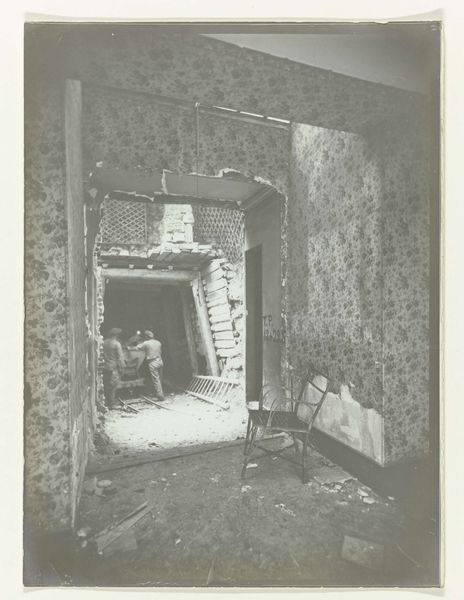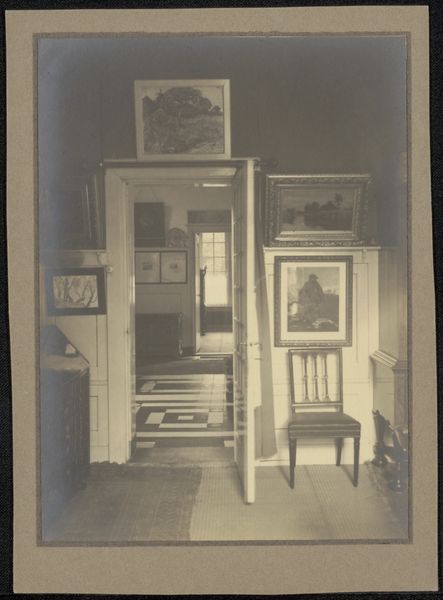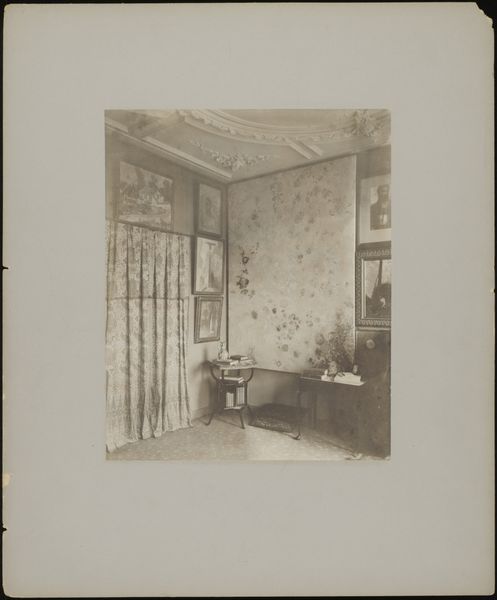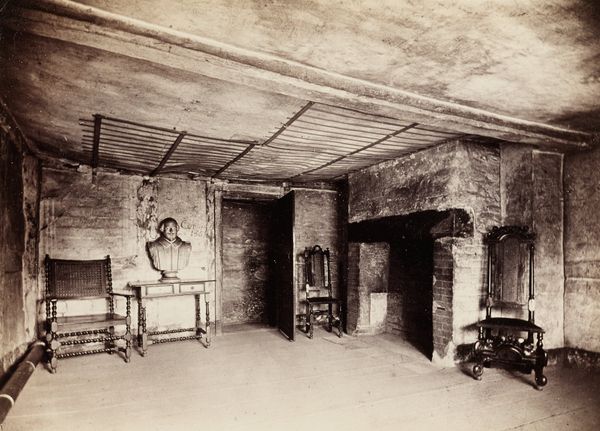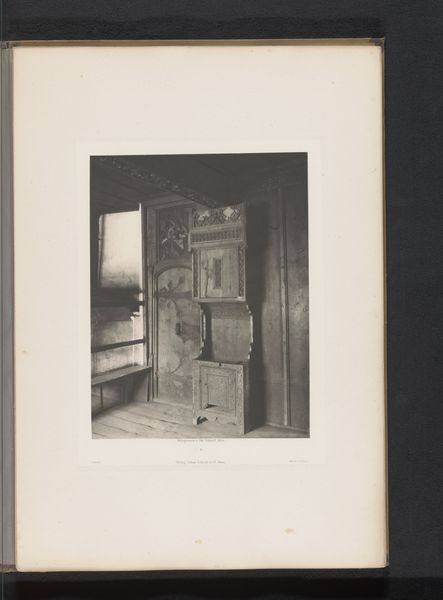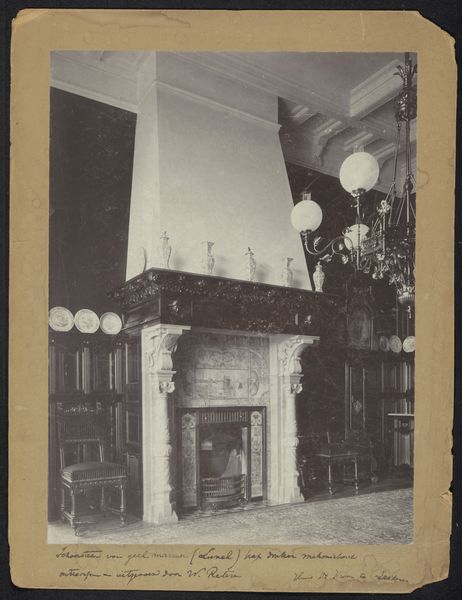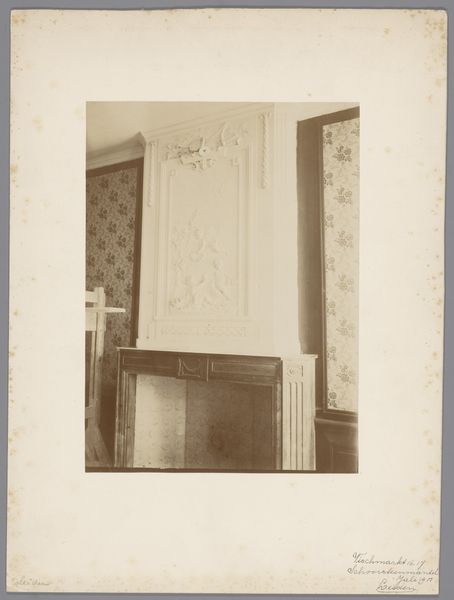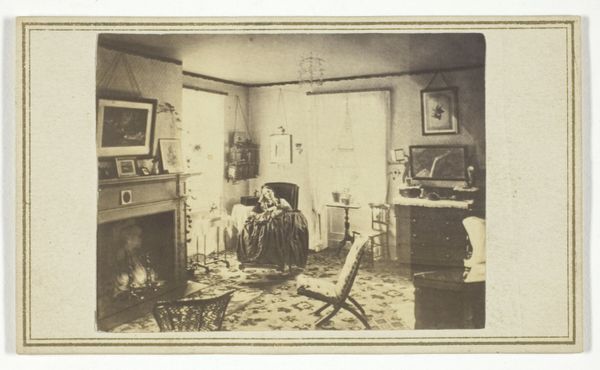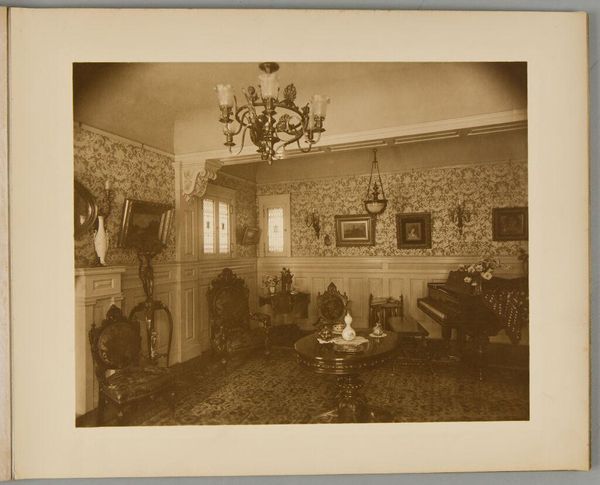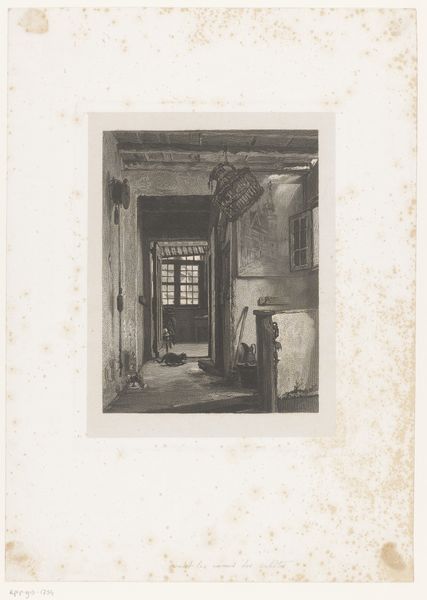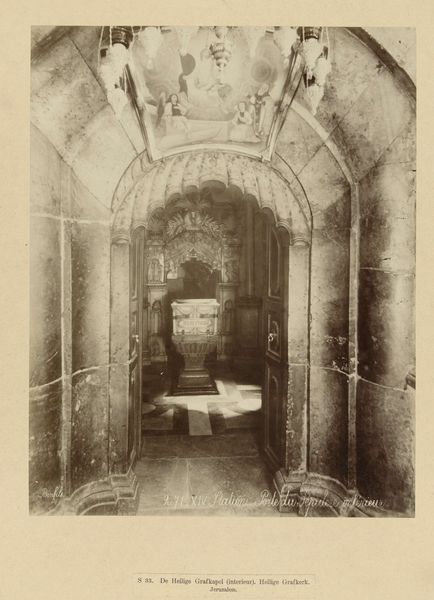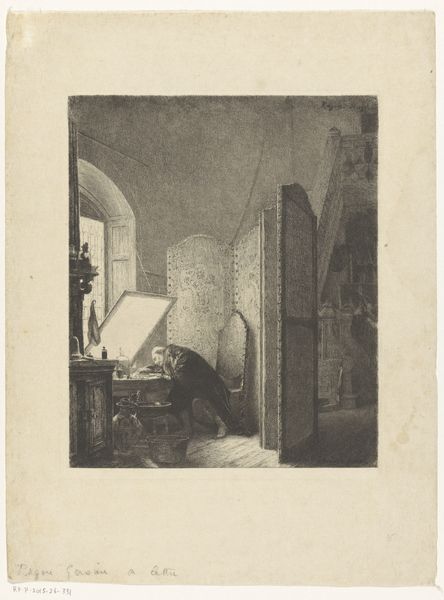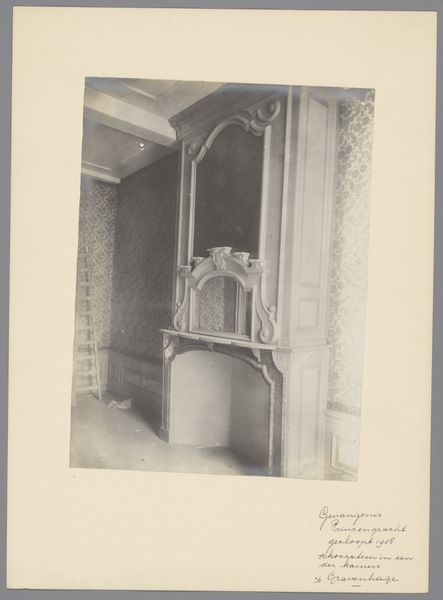
photography, gelatin-silver-print
#
print photography
#
pictorialism
#
landscape
#
photography
#
gelatin-silver-print
#
genre-painting
Dimensions: 17.8 × 13.7 cm (image); 20.7 × 15.9 cm (paper); 32 × 24.9 cm (album page)
Copyright: Public Domain
Editor: So, here we have Peter Henry Emerson’s "The Conspirator's Room, Old Rye House," a gelatin-silver print from the 1880s housed here at the Art Institute. There's a slightly eerie stillness to the image. I’m struck by how the photographer plays with light and shadow to emphasize the textural contrasts within the interior. What formal qualities jump out to you? Curator: Certainly. One is drawn immediately to the tonal range Emerson employs, doesn't one think? Note how the subtle gradations of gray—almost a monochrome—articulate form and space within this photographic print. Emerson masterfully controls light, moving the eye across the photograph's surface, accentuating the variations in texture within the Old Rye House chamber. Editor: So, it's less about what the image *represents* and more about *how* it is presented. Curator: Precisely. Consider, for instance, the placement of the furniture, most notably the fireplace: its weight on the composition. Note the lines on the fireplace which provide linear thrust, which the hanging dark-framed artwork opposes. Further, the negative space provided by the entryway suggests an openness. Would you agree that, formally, it adds visual dynamism to the interior depicted? Editor: Absolutely, the sharp corners and edges play against softer lighting and subtle shadow, generating visual interest even beyond any representational elements. It draws the eye! Curator: Indeed. That interplay of light and dark, form and space, ultimately, is what engages the viewer, encouraging contemplation on Emerson's expert pictorial treatment. The materiality—the silver gelatin print itself—allows for a range of tonal depth that enhances the compositional reading of the photographic elements within. Editor: Thank you. Thinking about those choices, the lines and shades of the photography is now much more captivating. Curator: Quite right. By examining his choices within the frame, we are better equipped to grasp how the aesthetic language is communicated.
Comments
No comments
Be the first to comment and join the conversation on the ultimate creative platform.
